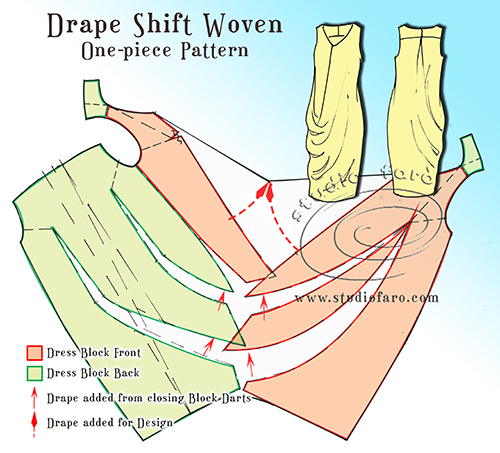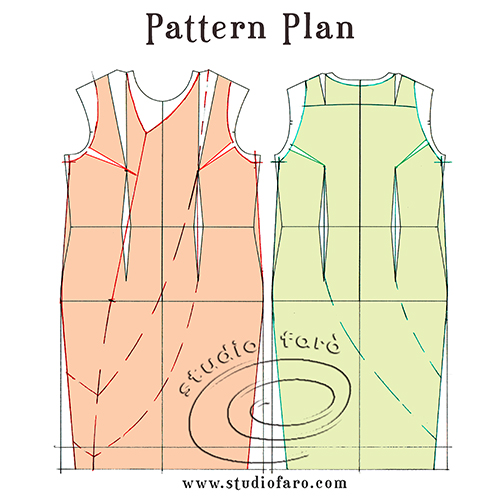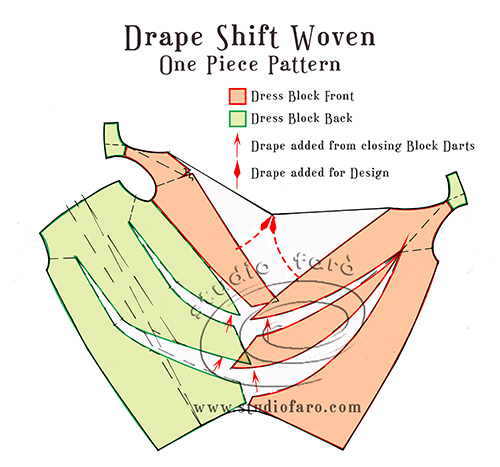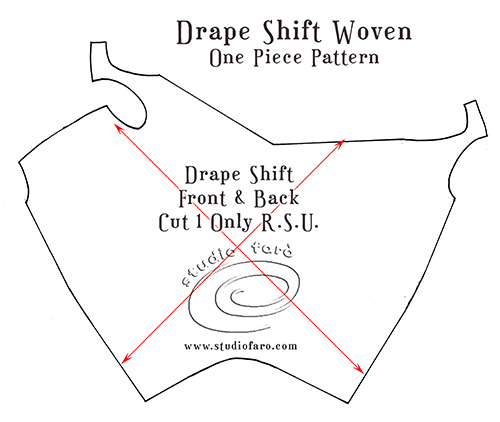24 Nov The Drape Shift Woven
The original Drape Shift #PatternPuzzle post has turned out to be the best performing of all our blog posts over the past two years. It has pattern making instructions for the knit version of this design which is admittedly far more straight forward than the woven fabric version featured in this post. So in response to many requests I have detailed here the pattern making instructions to make this design for woven fabrics.

Starting with my Fitted Dress Block:
- Mark in the sleeveless armhole (front & back) with the side seam changes and necessary gape darts.
- Mark in the asymmetric front neckline and draw in the angle and direction of the drape seam toward the right side hip area. Mark the seam end near the hip line.
- Straighten the side seam from the underarm to the hip.
- Taper the side seam from the hip to the hemline.
- Mark in the back neckline to match through from the front.
- Mark in the back yoke line near the shoulder dart ends.
- Now mark in the cut lines (dashed lines) that connect to the darts. This is where we will be introducing the drape from the dart shaping.

- Cut along these lines for the front and back.
- Close all darting (bust, waist and gape darts) transferring the shape into the cut lines.
- Join the front right side seam to the back right side seam at the underarm point.
- Join the front and back pieces at the hemline and balance the two patterns to get the front seam lines close together.
- And finally, lift the front seam lines together to introduce more drape into the front dress.
- Trace the back yoke pieces onto the front shoulder lines.
- Make an allowance in the back yoke seam for a generous inverted pleat.
- This is your completed pattern shape.

- Place your grain lines to maximise the benefits of the bias grain for the drape in the dress. Here I have placed the bias gain below the front seam where the majority of the drape is located.
- For the construction and finish of this design, you could bind or face the armhole and neckline. Much will depend on the fabric you use.
- There may be a zipper included in the one side seam on the left side of the dress. It is possible the narrow hem may restrict easy access without a zipper.
- Use any weave that is soft and drapey. Avoid crisp woven fabrics as they will stick out, look bulky and not at all elegant.

Let me know if you have any questions through the comments section below. It’s your questions that help tease out the finer detail in the pattern making.
Enjoy 🙂
Take this moment to sign up for my fabulous newsletter! Every month or so I send an email newsletter with new website content and always, always an enormous discount code for all my sewing patterns, garment blocks and pattern making instructions.
This discount code is for subscribers only. Don't miss out!


No Comments